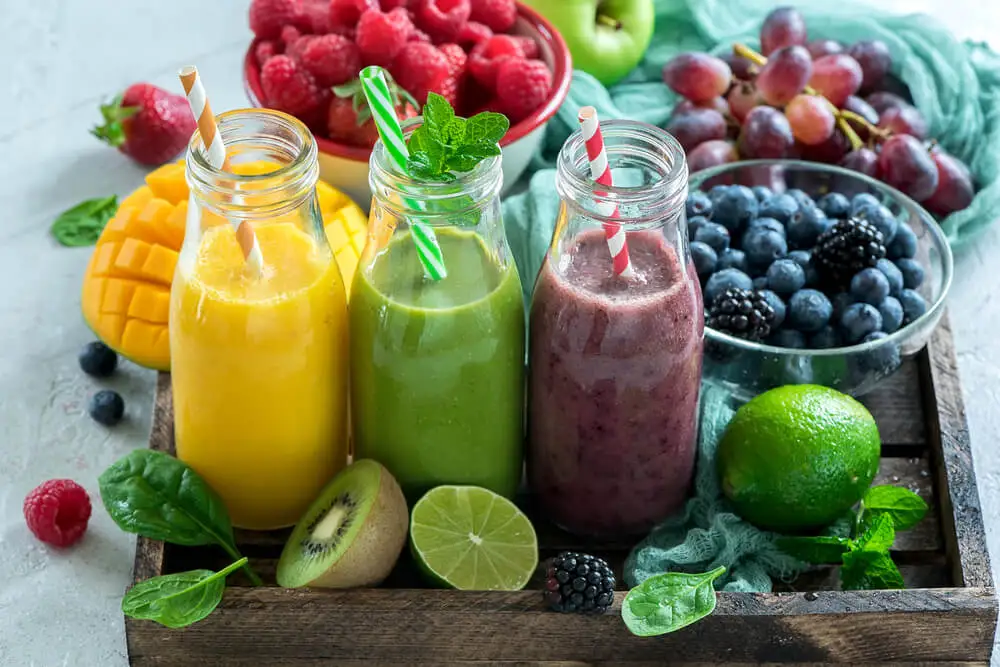High Glycemic Index Foods: Should They Be Avoided?


Written and verified by the nutritionist Saúl Sánchez Arias
Foods with a high glycemic index are capable of significantly increasing blood sugar levels. This has a series of advantages and disadvantages, depending on the context.
What is clear is that they shouldn’t be abused, especially if we’re talking about sedentary people. Otherwise, metabolic pathologies could develop over the years.
The first thing to note is that there are two types of foods with a high glycemic index:
- Fresh
- Ultra-processed
The latter shouldn’t appear regularly in your diet, as they also have trans fats and artificial additives. These elements could affect systemic inflammation levels.
When to consume high glycemic index foods?
In the context of sport, high glycemic index foods can be consumed more or less regularly. Simple sugars are the main energy substrate for high-intensity activities.
They’ll also encourage recovery processes, based on glycogen resynthesis. However, it has been shown that, in order to achieve efficiency in this process, it’s advisable to consume carbohydrates with a dose of proteins of high biological value.
What you should avoid is to create a hypercaloric environment, unless the intention is to build muscle mass. Otherwise, the amount of adipose tissue will increase, resulting in increased systemic inflammation. This results in inefficiencies in physiological and metabolic processes, as well as reduced athletic performance.
But, under the conditions of a balanced diet, it’s possible to include foods with a high glycemic index if you exercise regularly. Ideally, the consumption of these products should take place before and after the physical workout, in order to maximize the benefits.
It’s even possible to include such intake during training. But, in this case, it’s advisable to test tolerance beforehand to avoid gastric discomfort.
It should also be noted that we’re talking about foods with a high glycemic index, such as fruit, white rice, pasta, white bread, and sugary cereals. Many of them are considered fresh, but this doesn’t mean that they should always be included in our diets.

Find out more: 3 Whole Grain Bread Recipes
When to avoid high glycemic index foods?
Despite the above, high glycemic index foods aren’t always positive. In people who don’t exercise, regular consumption could result in metabolic pathologies over the years. This is evidenced by research published in the journal Current Diabetes Reports. The effects are devastating when simple sugars are administered through beverages, as they enter the bloodstream very quickly.
When we’re talking about people who don’t exercise, it would even be a positive step to limit the presence of carbohydrates in the diet as such. It isn’t necessary to reach a situation of ketosis or follow a keto diet, but you should limit the consumption of these nutrients in order to avoid blood glucose spikes.
Above all, you’ll need to prioritize the consumption of protein to prevent the catabolism of lean mass. This can lead to sarcopenia.
According to a study published in the journal BioMed Research International, it’s important to ensure a daily intake of high-quality protein in order to prevent muscle atrophy. However, lipids are also decisive for this. After all, carbohydrates only function as energy fuel and can be produced by the body itself, so they aren’t as decisive.
Discover more: The Effects of a Low-Carb Diet on Your Body
How to vary the glycemic rate?
It is relevant to note that the glycemic index of foods can be varied if different cooking methods are applied.
Grinding products increases the rate at which sugars enter the bloodstream. Overcooking and softening the fibers will have exactly the same effect. This is why you should be very careful, as some people think they’re eating low glycemic index foods when they aren’t.
In general, it’s always best to eat the whole fruit. If only the juice is used, if it is put in the oven, or if it’s crushed, the fiber composition is altered.
This will cause the fructose to be absorbed more quickly into the bloodstream, changing the effects at a metabolic level. Consequently, it would lead to certain problems in sedentary people, such as diabetes and fatty liver.

Beware of foods with a high glycemic index
Foods with a high glycemic index should appear in the diet only occasionally, unless we’re talking about athletes. In this context, they’re necessary in high quantities in order to meet energy demands and to achieve an optimal state of recovery.
Otherwise, performance may be limited. You may even experience an increased risk of muscle injury.
All cited sources were thoroughly reviewed by our team to ensure their quality, reliability, currency, and validity. The bibliography of this article was considered reliable and of academic or scientific accuracy.
- Alghannam, A. F., Gonzalez, J. T., & Betts, J. A. (2018). Restoration of Muscle Glycogen and Functional Capacity: Role of Post-Exercise Carbohydrate and Protein Co-Ingestion. Nutrients, 10(2), 253. https://doi.org/10.3390/nu10020253
- Yoshida, Y., & Simoes, E. J. (2018). Sugar-Sweetened Beverage, Obesity, and Type 2 Diabetes in Children and Adolescents: Policies, Taxation, and Programs. Current diabetes reports, 18(6), 31. https://doi.org/10.1007/s11892-018-1004-6
- Martone, A. M., Marzetti, E., Calvani, R., Picca, A., Tosato, M., Santoro, L., Di Giorgio, A., Nesci, A., Sisto, A., Santoliquido, A., & Landi, F. (2017). Exercise and Protein Intake: A Synergistic Approach against Sarcopenia. BioMed research international, 2017, 2672435. https://doi.org/10.1155/2017/2672435
This text is provided for informational purposes only and does not replace consultation with a professional. If in doubt, consult your specialist.








